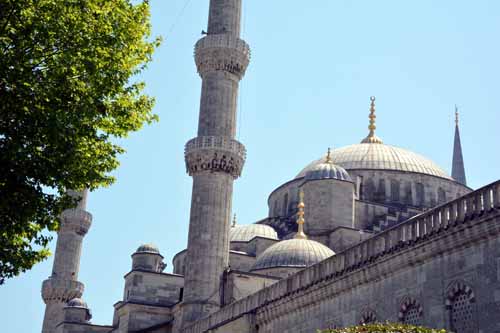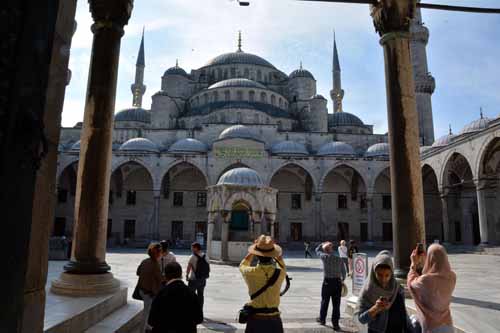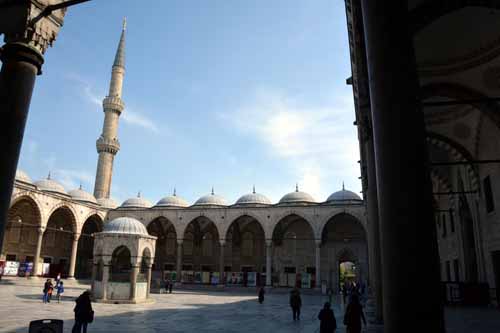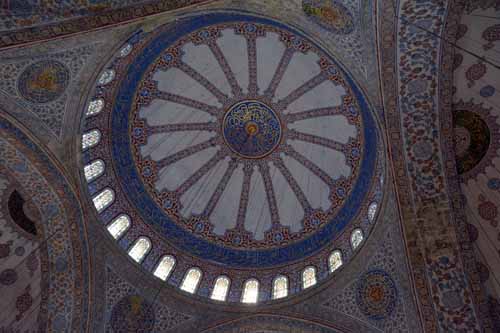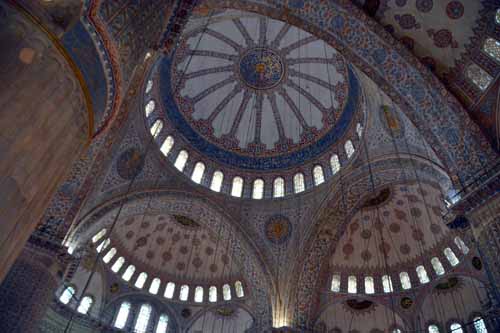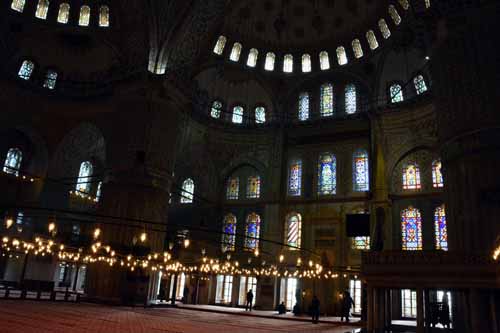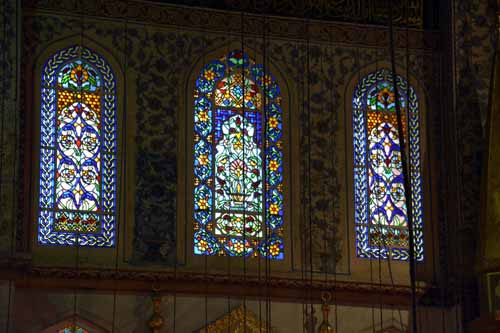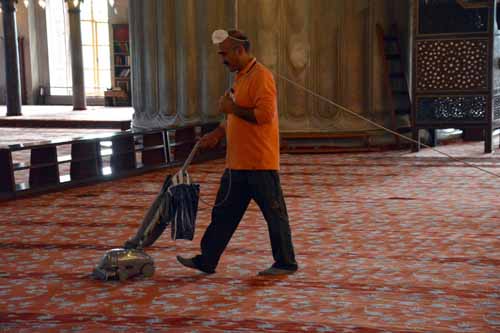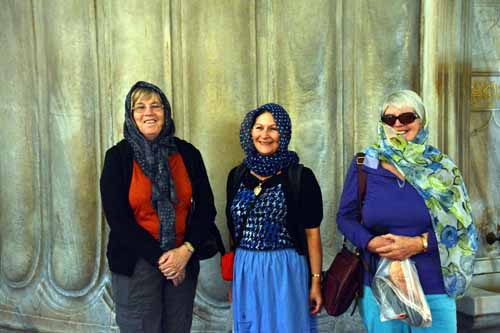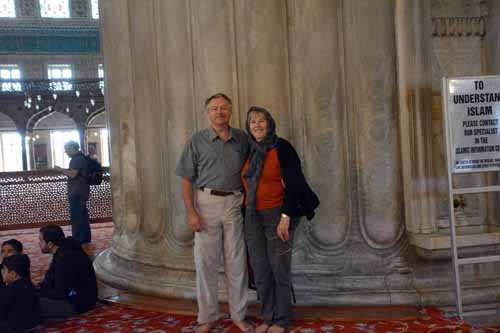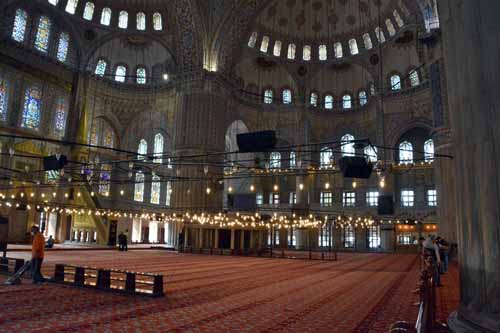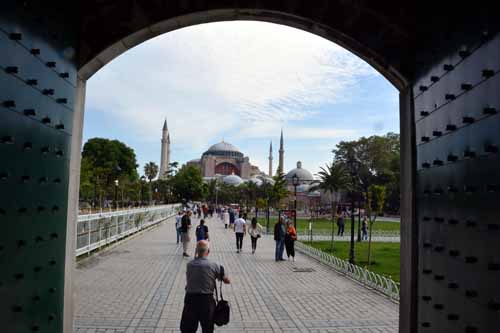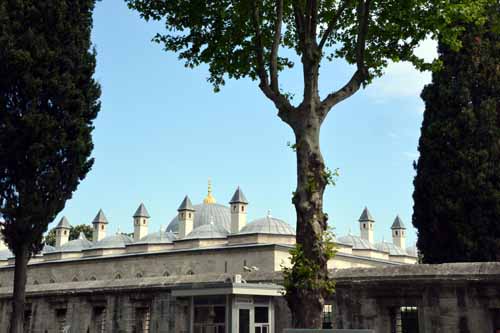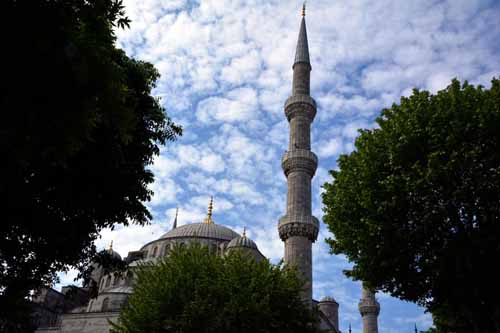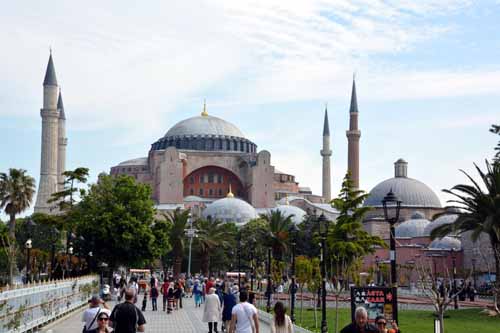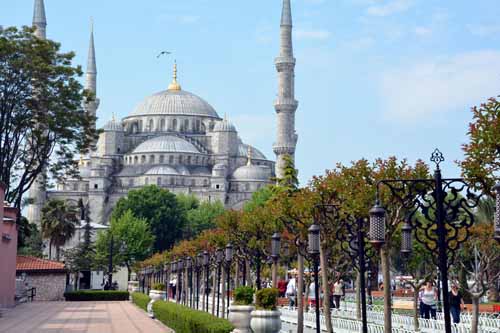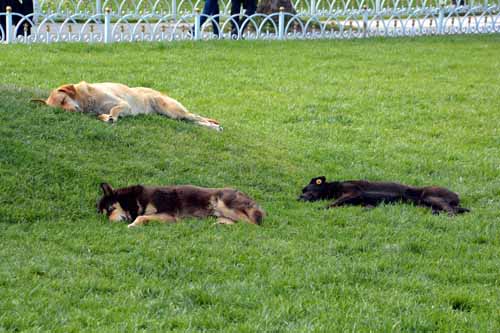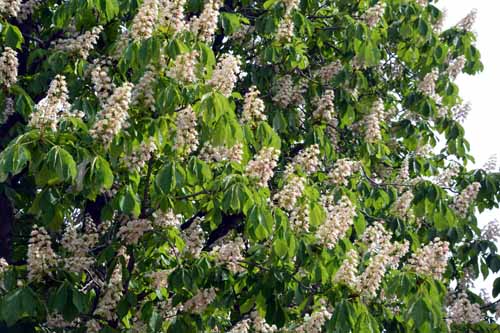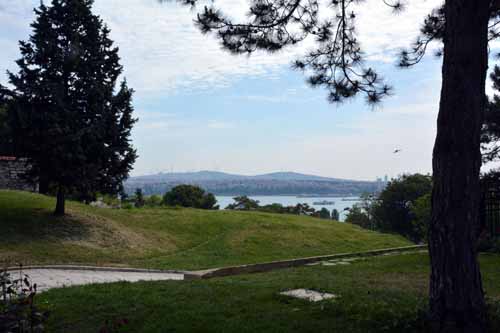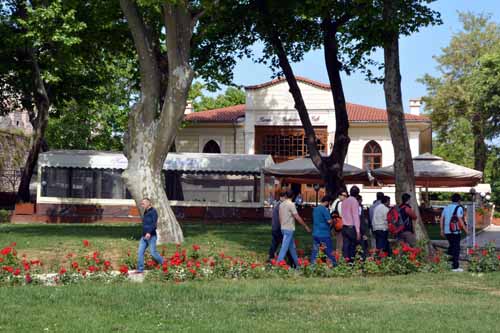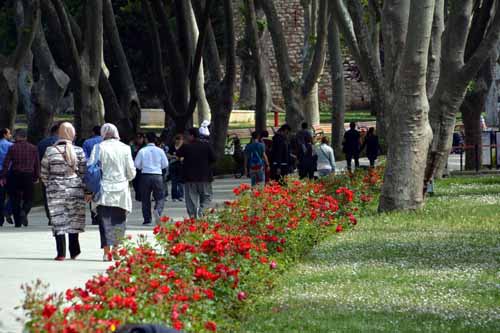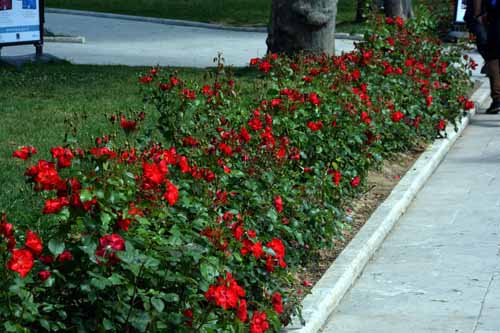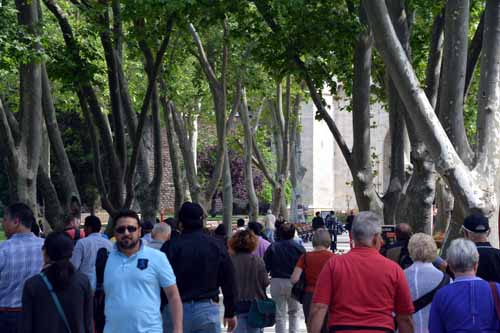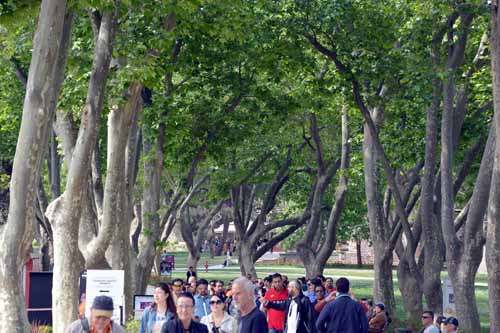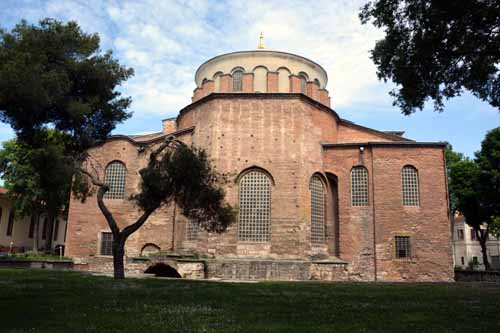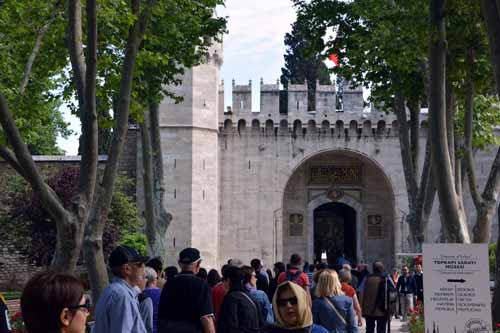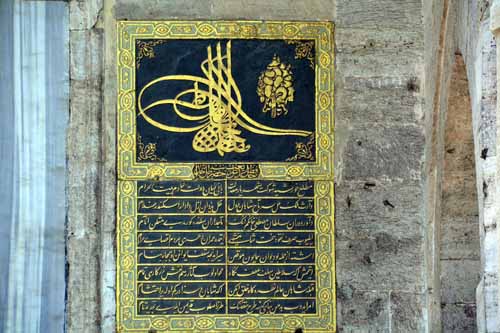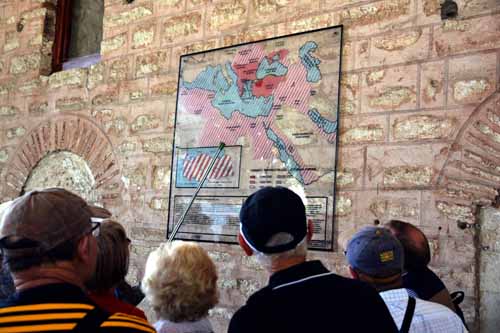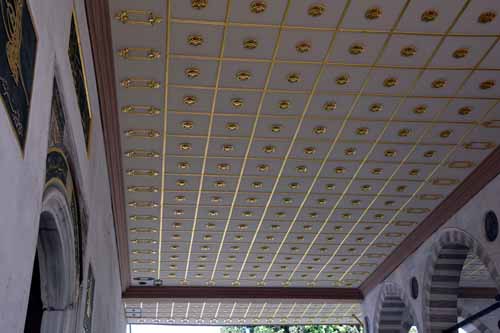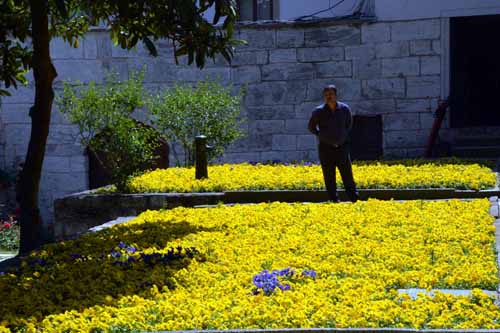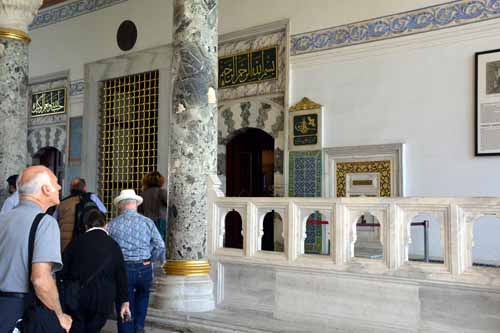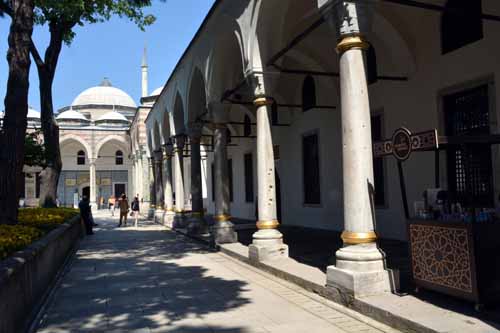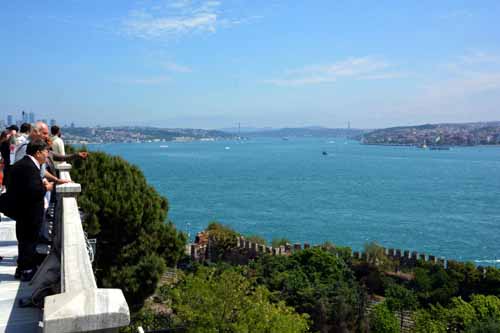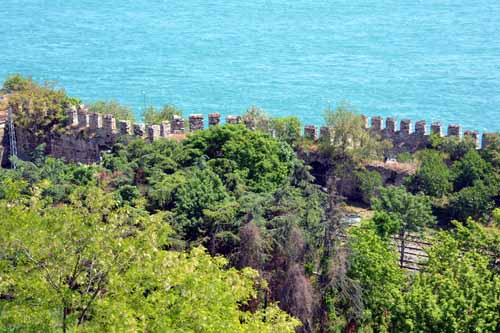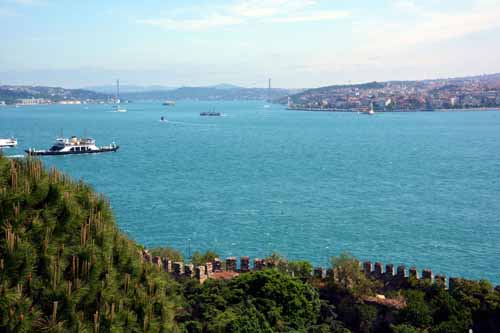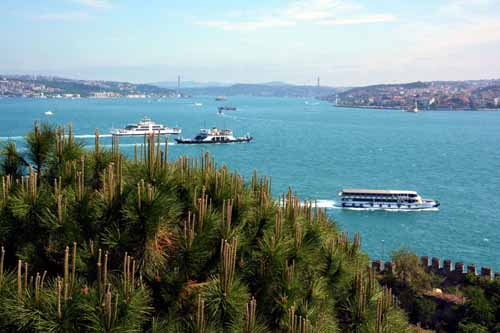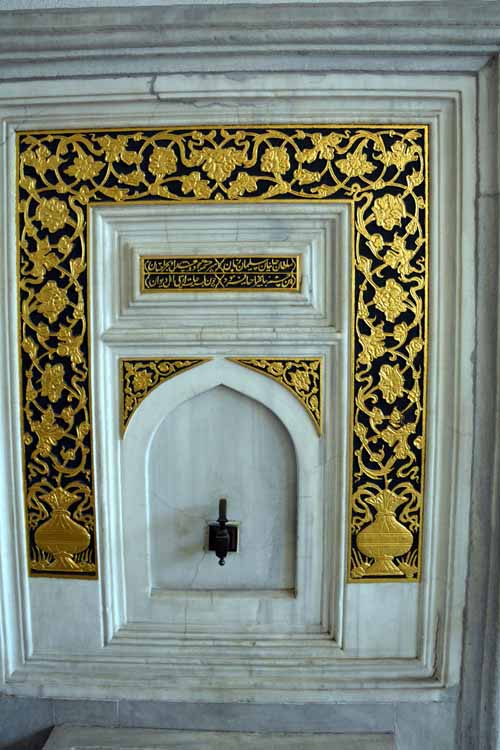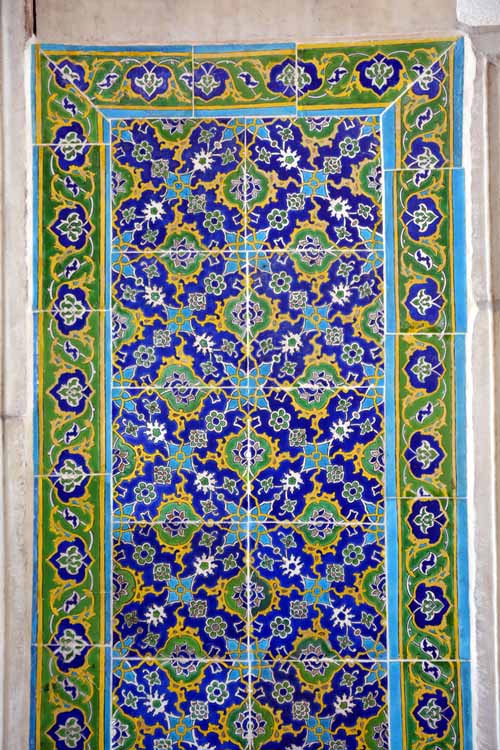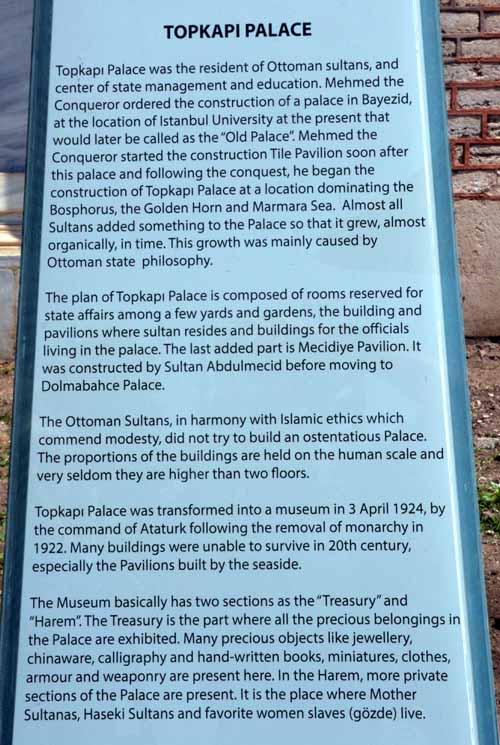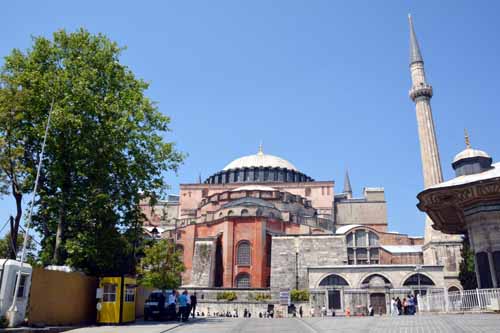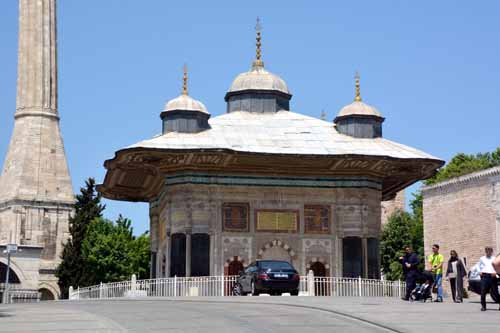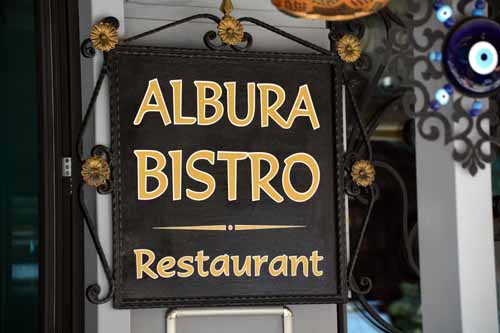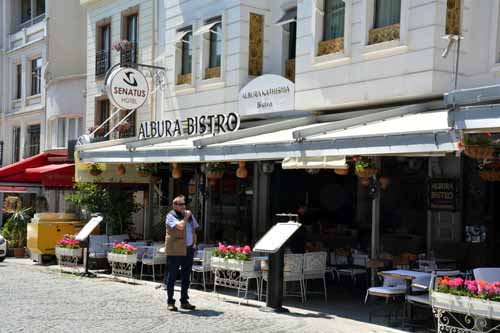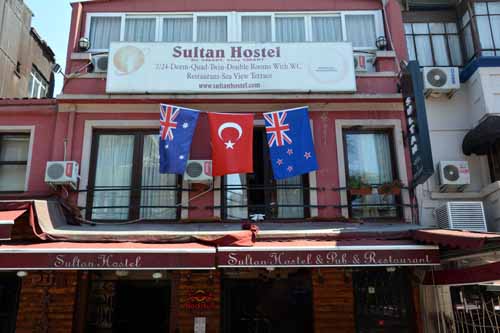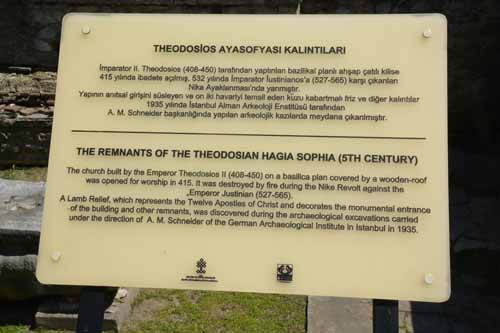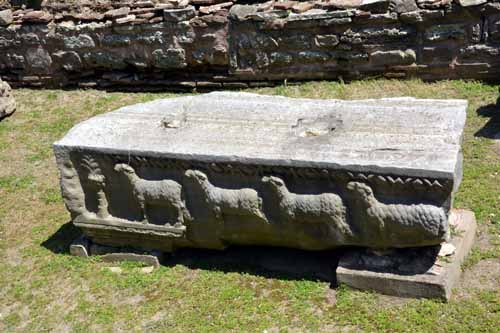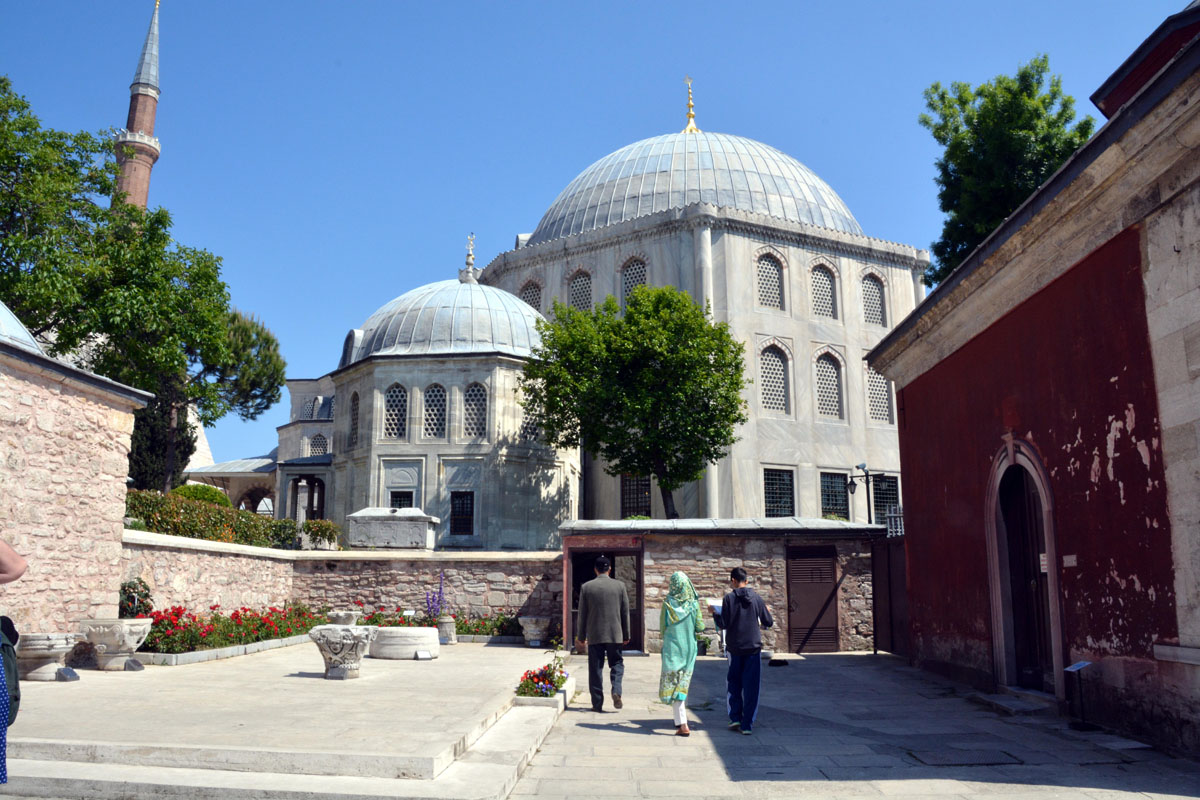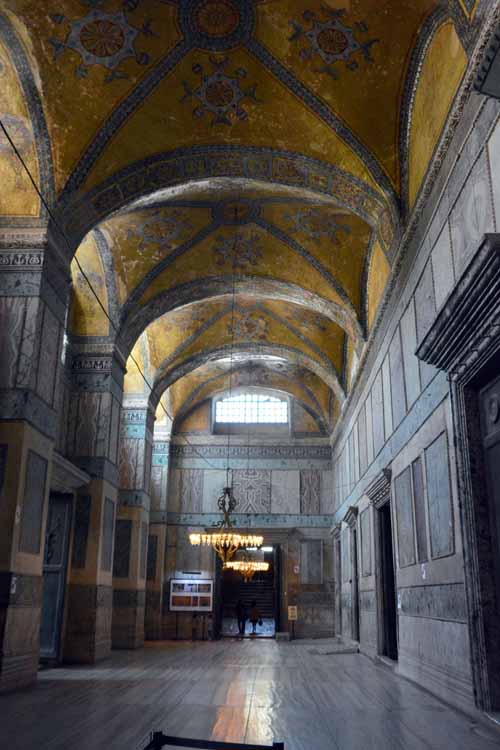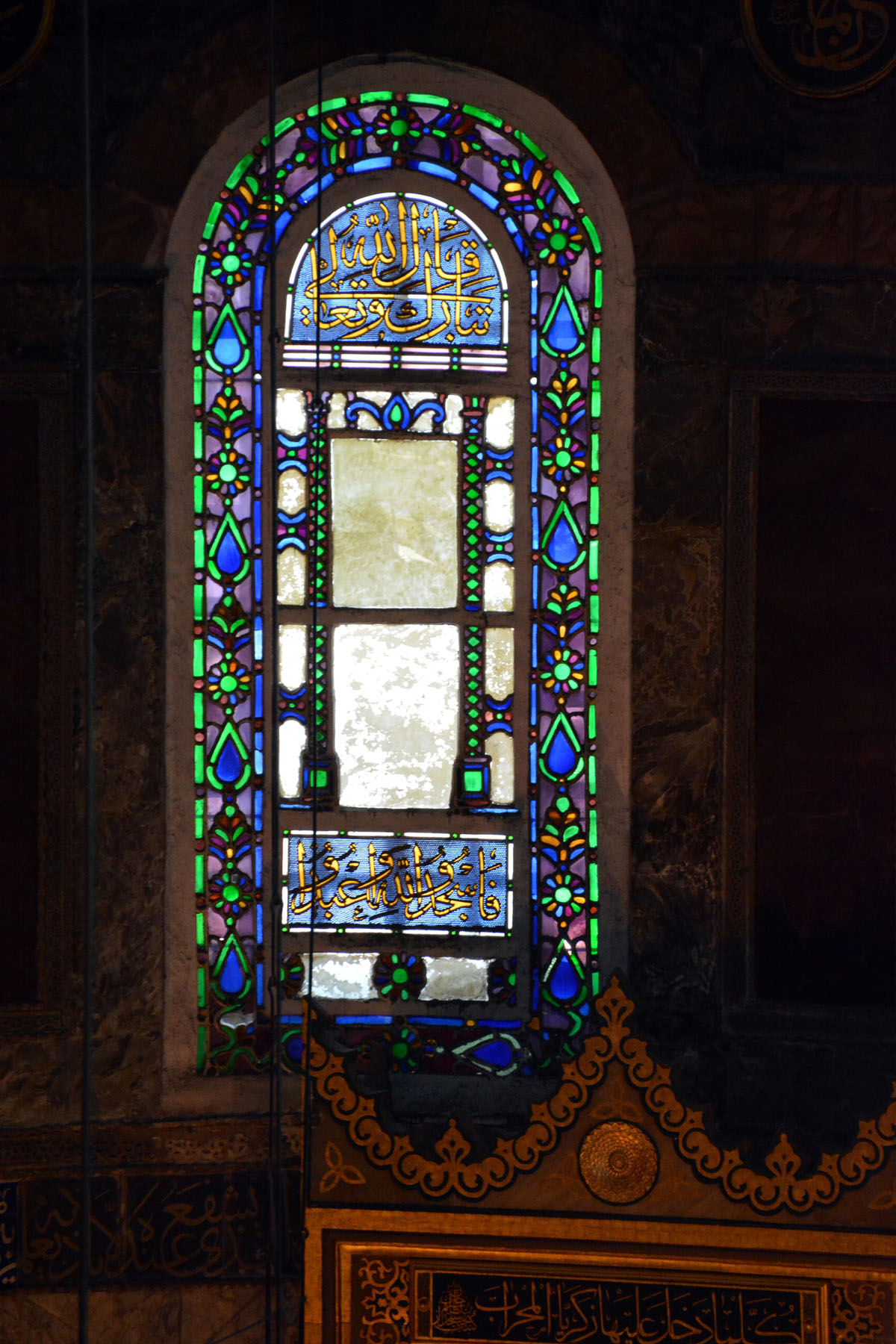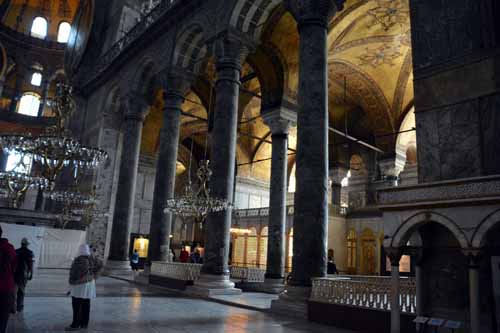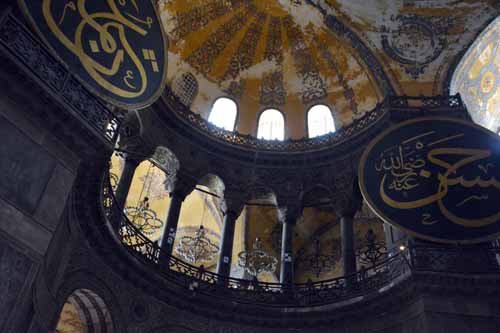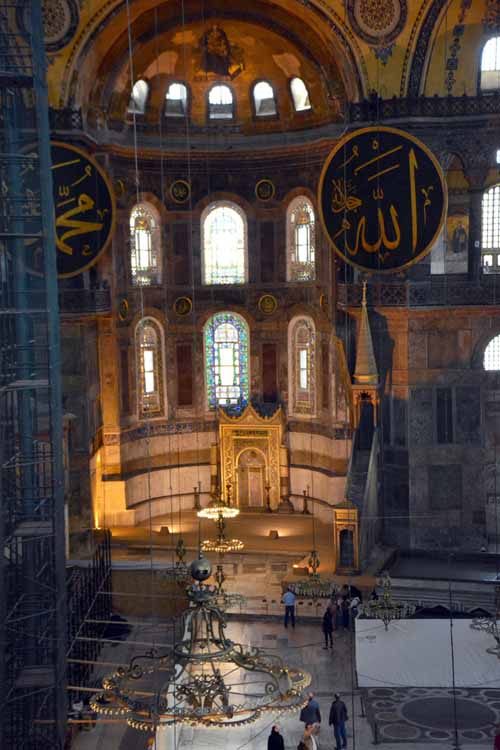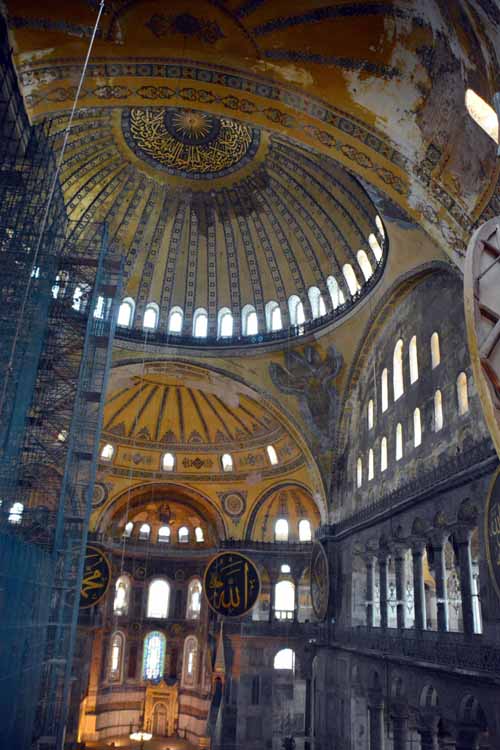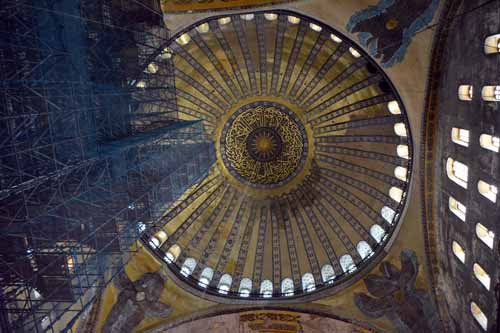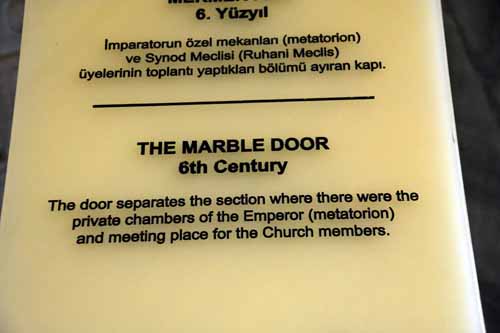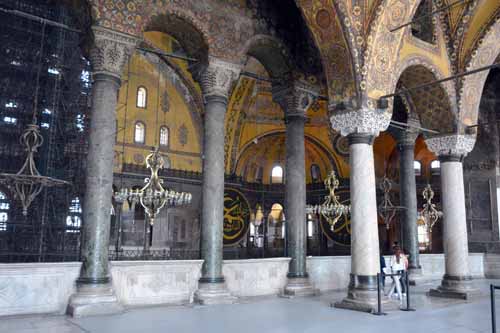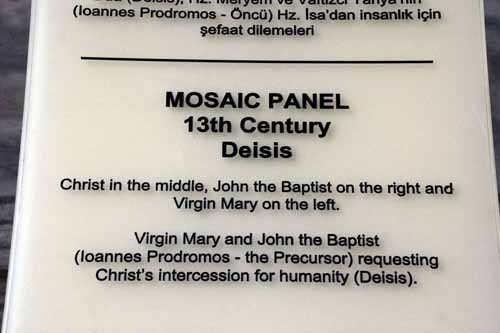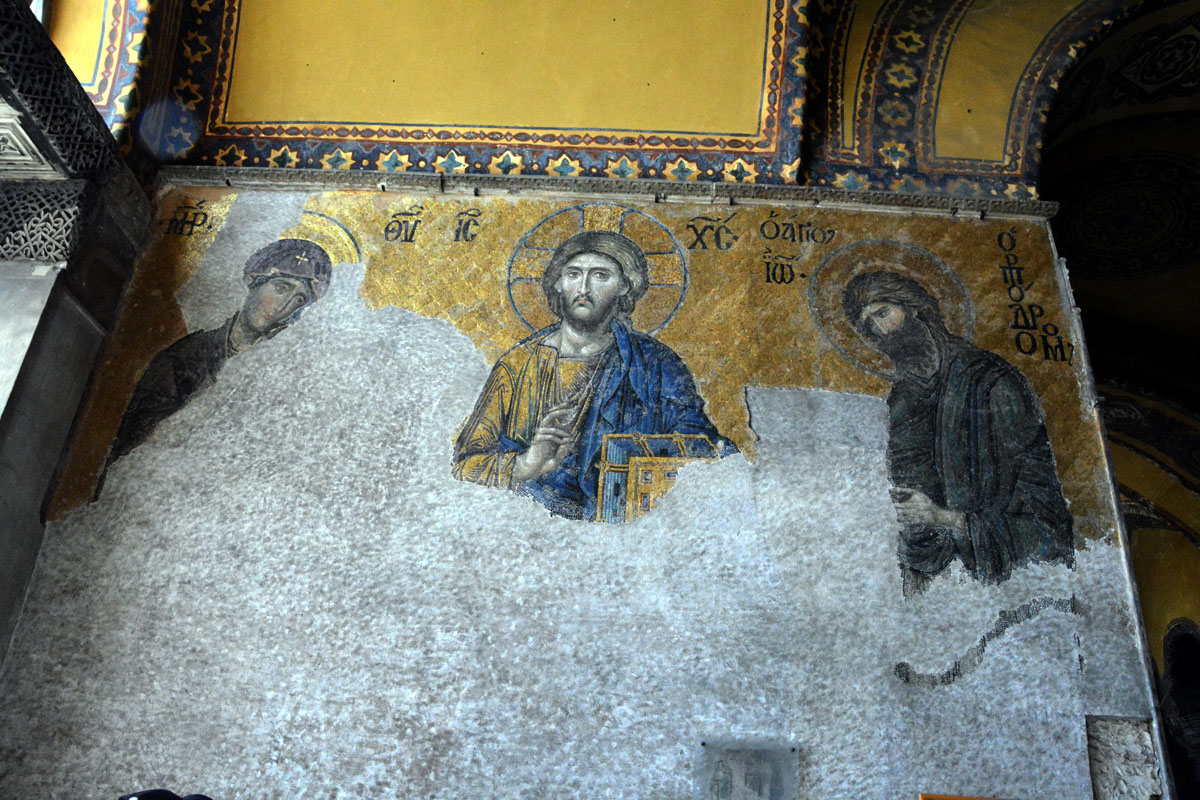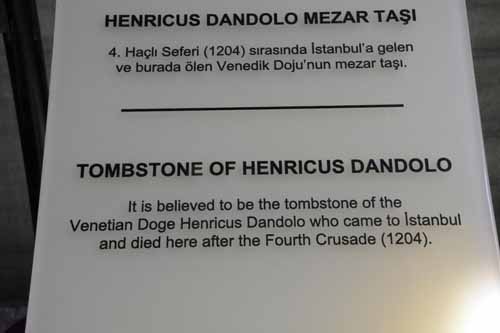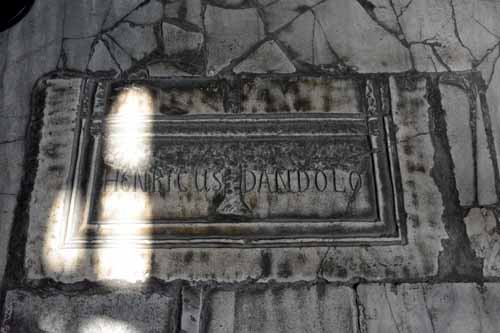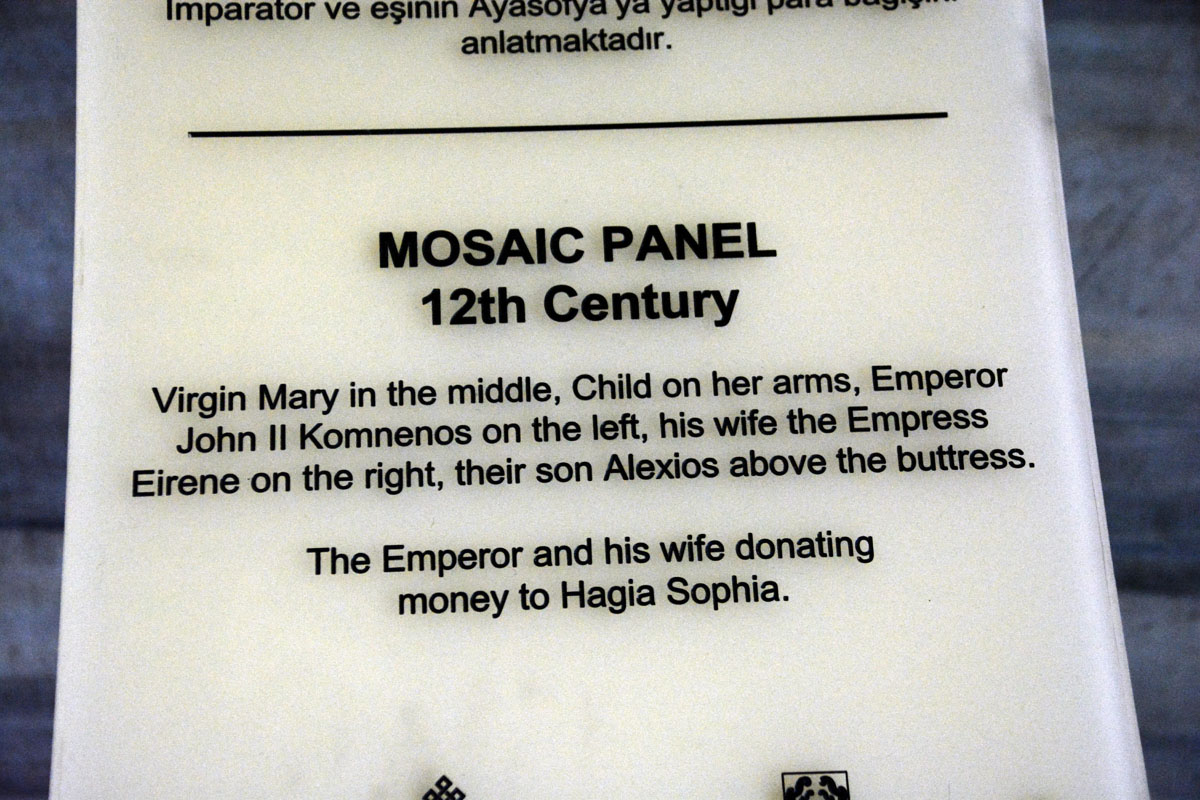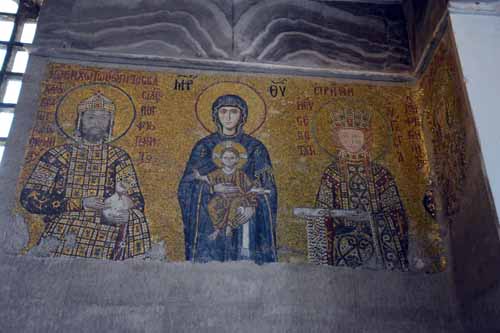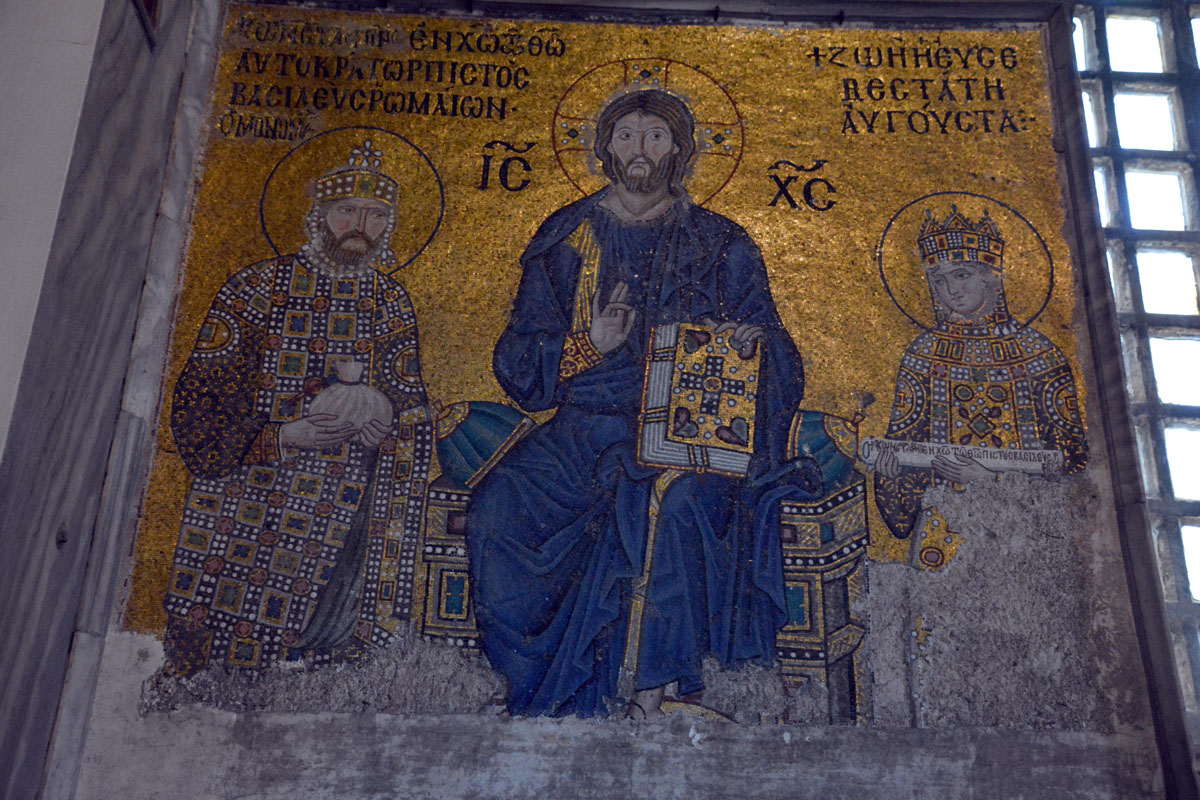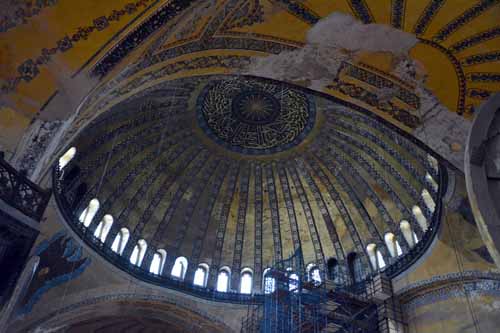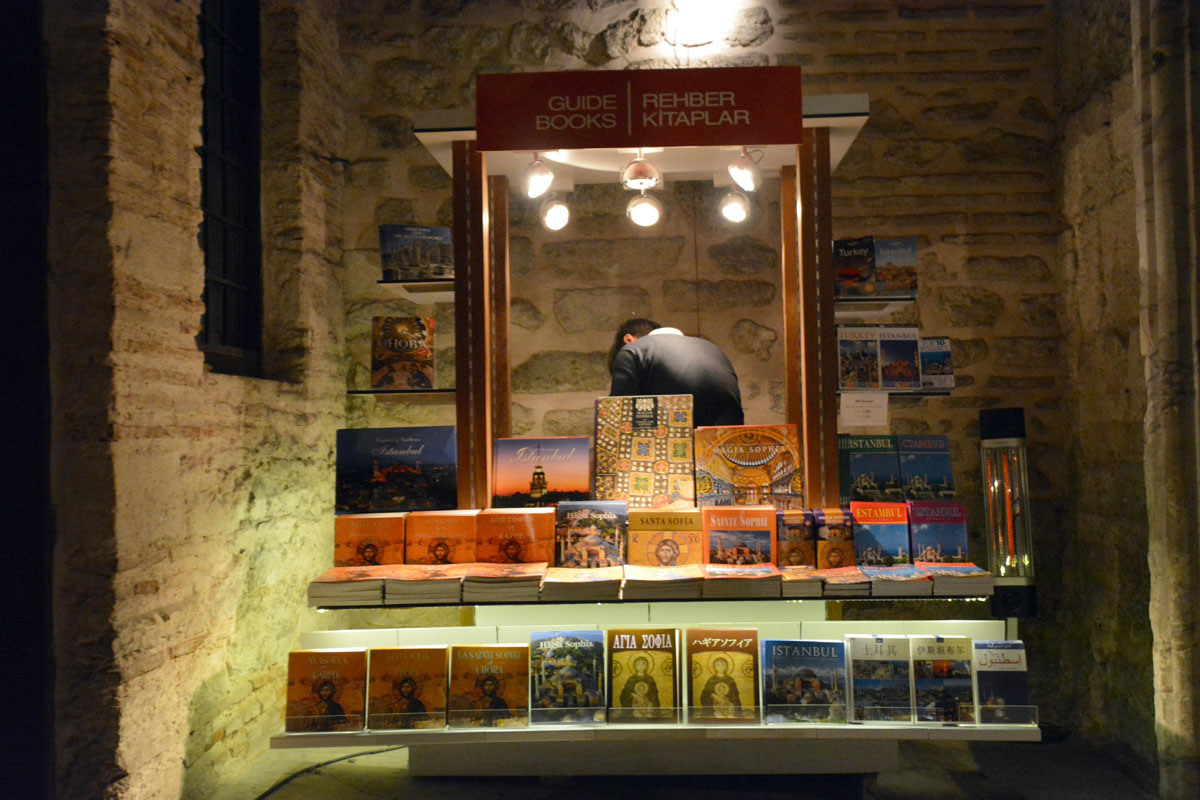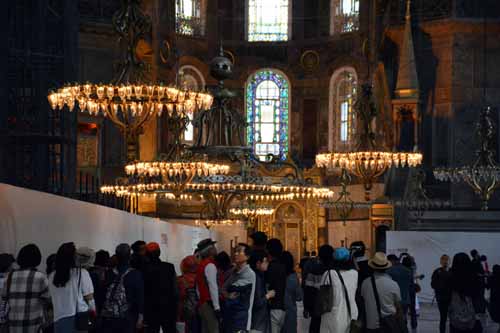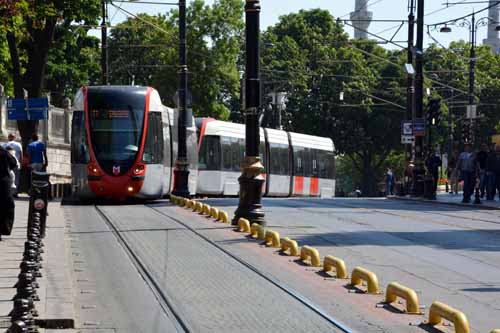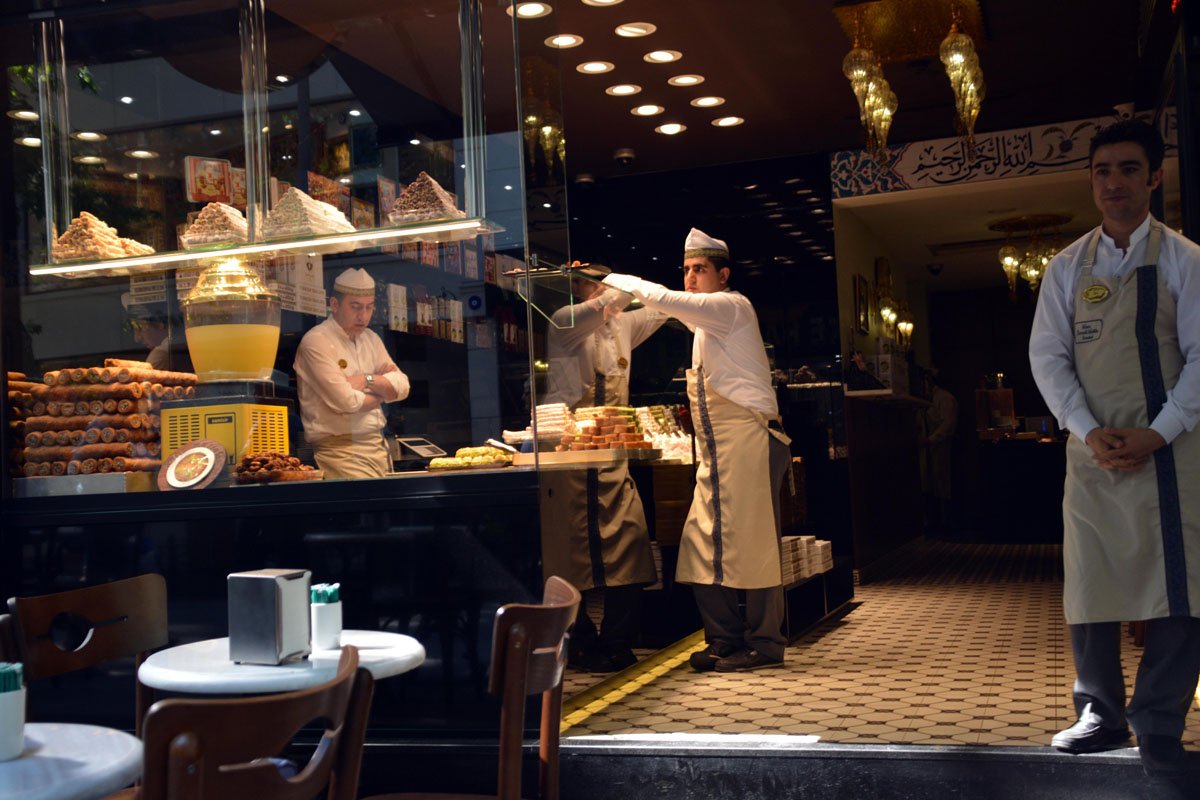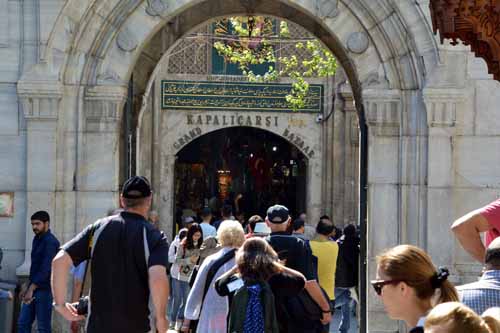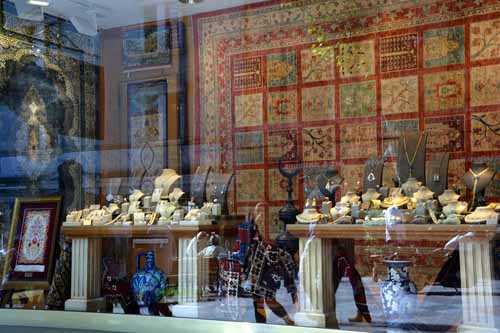Crete Pilgrimage 2016 - Day 18Turkey - Another day in IstanbulIntroductionAfter a nice breakfast at the hotel, we gathered with the Tempo Tours group and met our Turkish tour guide - xx. She proved to be a wealth of information and adept at dealing with locals who were not so sure about these people from New Zealand and Australia. We walked from the hotel to the Blue Mosque and then to the Topkapi Palace. For lunch we walked a short distance down hill to the Albura Kathisma in Akbryik Street, then back up to visit the Hagia Sofia Mosque. Then back through the Grand Bazaar, where we bought a large box of Turkish Delight before returning to the hotel. The Blue MosqueOur tour of the Blue Mosque began where we had finished the previous day - at the entrance gate, but this time we had a guide - the charming Daria. We entered the main courtyard, took off our shoes and had our attire inspected. I was fine in my long trousers but most of the women were asked to don long skirts and head scarves. Then in we went. All mosques have a large, high-vaulted central area, under the dome which is surprisingly light and airy. Topkapi PalaceThe Topkapi Palace is one of the main tourist attractions in Istanbul. It was once the home of the Ottoman sultans for over 400 years (1465-1856). The palace complex consists of four main courtyards and many smaller buildings. At its peak, the palace was home to as many as 4,000 people, and covered a large area. It contained a hospital, bakeries, and a mint. It received the name "Topkapı" (Cannon Gate in the 19th century, after a (now lost) gate and shore pavilion. After the 17th century, the Topkapı Palace gradually lost its importance as the sultans preferred to spend more time in their new palaces along the Bosphorus. Some functions, such as the imperial treasury, the library, and the mint, were retained in the Topkapı Palace. The complex is guarded by officials of the ministry as well as armed guards of the Turkish military.
LunchFrom the Palace we wlked a short distance downhill to the Alburo restaurant for lunch.
The Hagia SophiaThe Hagia Sophia was a Greek Orthodox Christian basilica, later an imperial mosque, and now a museum. From the date of its construction in 537 AD, and until 1453, it served as an Eastern Orthodox cathedral, except between 1204 and 1261, when it was converted by the Fourth Crusaders to a Catholic cathedral under the Latin Empire. The building was later converted into an Ottoman mosque from 29 May 1453 until 1931. It was then secularized and opened as a museum on 1 February 1935. Famous in particular for its massive dome, it is considered the epitome of Byzantine architecture and is said to have "changed the history of architecture". It remained the world's largest cathedral for nearly a thousand years, until Seville Cathedral was completed in 1520.
Back to the hotelFrom the Hagia Sophia we walked back towards the hotel. We passed the famous "Pudding Shop" or Lale Cafe. It became popular in the 1960s as a meeting place for beatniks and, later on, hippies and other travelers on overland routes - the "hippie trail". The restaurant got its colloquial name as a result of "word-of mouth" from numerous foreign travelers that could not remember the name of the eatery but did remember the wide and popular selection of puddings sold there and thus referred to it as the "pudding shop". We then walked through the Grand Bazaar, where we were tempted with Turkish Delight, but not the spices or gold.
Last updated: 28/03/2017 |
